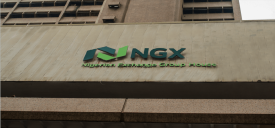Nigeria’s Equities Market Suffers Massive Loss of ₦658 Billion
LAGOS — The Nigerian equities market kicked off the week on April 7, 2025, with a significant downturn, as investors lost a staggering ₦658 billion due to widespread selloffs across major sectors. This substantial decline was driven by a sharp drop in the share prices of key financial stocks, including OANDO, RTBRISCOE, and CORNERST, each falling by 10%.
Market Performance
- All-Share Index Decline:
- The Nigerian Exchange (NGX) All-Share Index (ASI) plummeted by 1,295.02 points, or 1.23%, to close at 104,216.87 points from 105,511.89 points recorded on the previous trading day.
- Market Capitalization:
- The market capitalization decreased by 1.00% to ₦65.488 trillion from ₦66.147 trillion on April 4, 2025.
Sectoral Performance
- Insurance Sector:
- The insurance sector experienced the largest decline, dropping by 7.56%, followed by the banking sector, which fell by 5.48%.
- Consumer Goods and Energy Sectors:
- The consumer goods sector declined by 0.79%, while the oil and gas sector slumped by 0.65%.
Top Gainers and Losers
- Gainers:
- VFD Group led the gainers with a 10% increase in share price to ₦62.70 from ₦57. TotalEnergies and Guinea Insurance also recorded significant gains of 9.61% and 9.52%, respectively.
- Losers:
- OANDO, RTBRISCOE, and CORNERST were among the top losers, each experiencing a 10% decline in share prices.
Market Sentiment
- Negative Market Breadth:
- The market breadth was negative, with only 9 stocks advancing and 50 stocks declining, while 61 stocks remained unchanged in 15,690 deals.
- Increased Trading Volume:
- Despite the downturn, trading volume increased by 27.52% compared to the previous week, with 444.11 million units valued at ₦11,148.34 million being transacted.
Global Impact
- Trump’s Tariffs:
- Global Stocks Crash:
- The S&P 500 index in the U.S. fell by 2.3%, entering a bear market, which further exacerbated the sell-off in Nigerian stocks.
Conclusion
The significant loss in the Nigerian equities market highlights ongoing challenges faced by investors due to economic uncertainties and sector-wide declines. As the market continues to navigate these challenges, stakeholders are closely watching for signs of recovery and stability.

















